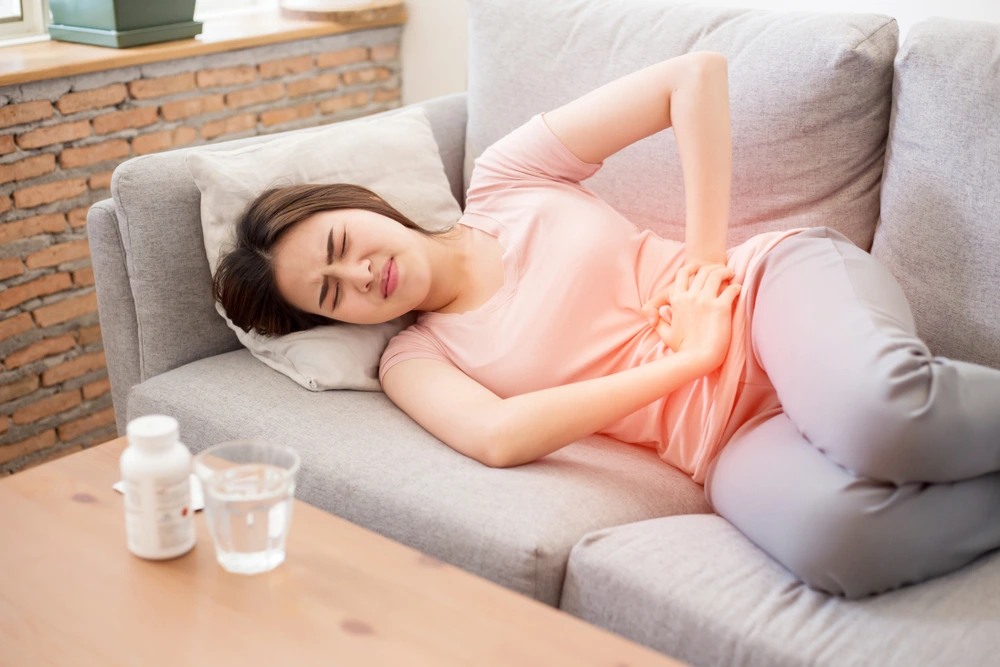Managing Menstrual Cramps: Guidelines for Using Pain Killers for Period Pain

Menstrual Cramps
Around fifty percent of individuals who menstruate experience period pain lasting approximately one to two days throughout their menstrual cycle.
Ensure effective management of your Menstrual Cramps during periods by adhering to these dos and don’ts if you use painkillers.
Causes Of Menstrual Cramps
The Institute for Quality and Efficiency in Health Care (IQWiG) notes that severe menstrual cramps in women may stem from an increased release of prostaglandin by the uterus. This excess production leads to painful cramps in the lower abdomen, potentially extending to the back or thighs. Additionally, benign growths such as fibroids could exacerbate this discomfort. Severe period pain might also signal endometriosis, a condition where uterine lining tissue grows beyond its usual boundaries.
Dos Of Taking Painkillers During Menstrual Cramps
Consult Your Gynaecologist
Dr. Rao emphasized the importance of discussing your symptoms, medical history, and suitable pain relief options before beginning any painkiller regimen for menstrual cramps.
Take Note Of The Time
Dr. Rao advised, “Start taking pain relievers when you first experience menstrual cramps or even slightly beforehand, especially if you’re aware of when they are expected. This proactive approach can assist in prevent severe pain.”
Stay Hydrated
Maintaining proper hydration is crucial for overall health. Surprisingly, dehydration can worsen your menstrual cramps. Dr. Rao advises, “To prevent dehydration and ease the discomfort, consume ample water alongside pain relief medication. Additionally, consider drinking hot water to enhance blood circulation and relax your muscles.”
Combine with Non-Pharmacological Methods Menstrual Cramps
Dr. Rao recommends combining heating pads, relaxation techniques, or gentle exercise with painkillers for improved relief. Applying heat to your back or abdomen can alleviate pain by relaxing the muscles responsible for cramps.
Don’ts Of Taking Painkiller During Menstrual Cramps
Don’t Exceed the Recommended Dosage
Dr. Rao advises against the tendency of many women to increase painkiller intake as pain worsens. However, he emphasized the risks of overusing non-prescription NSAIDs, which can lead to adverse effects such as nausea, acid reflux, and constipation, potentially harming the stomach lining. He advised following prescribed doses and avoiding surpassing recommended limits when taking painkillers.
Avoid Alcohol Consumption
Dr. Rao advises against consuming alcohol when taking painkillers, as it may heighten the risk of side effects and have adverse interactions with the medication. So, ladies, if you aim to manage your pain effectively, it’s essential to decline that glass of alcohol.
Avoid Taking Painkillers On An Empty Stomach
“To prevent stomach irritation, it is advisable to have a light meal or snack before taking painkillers when your stomach is empty”, said Dr Rao.
Avoid Extended Use
Dr. Rao advised against prolonged use of painkillers without medical guidance, as persistent usage may result in the development of tolerance and dependence.
Do Not Combine Painkillers
Dr Rao highlighted, “Do not combine multiple painkillers without consulting a healthcare provider, as this can increase the risk of side effects and drug interactions.”
Cramping and pain is fairly common around the time of menstruation. More than half the menstruators experience period pain for about one to two days during their cycle. These cramps usually happen at the beginning of your cycle.








